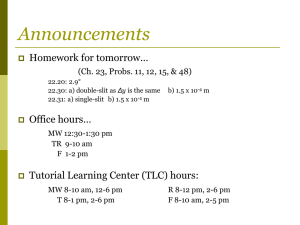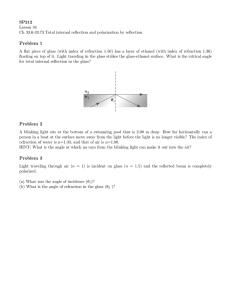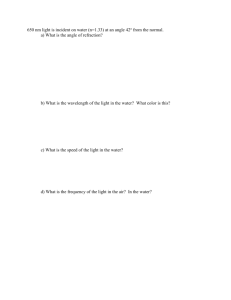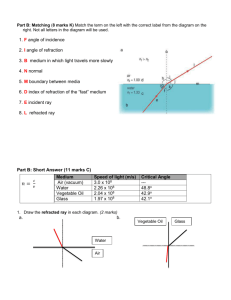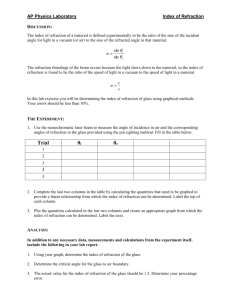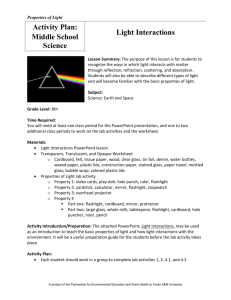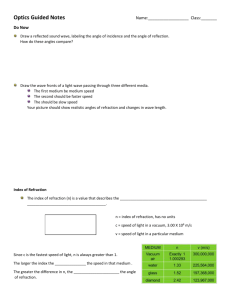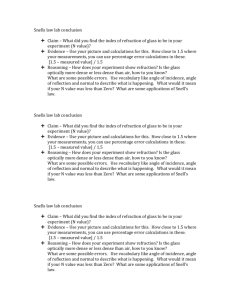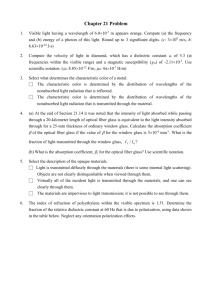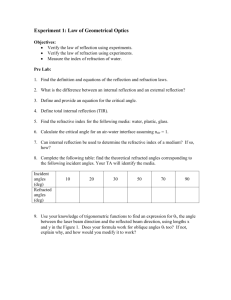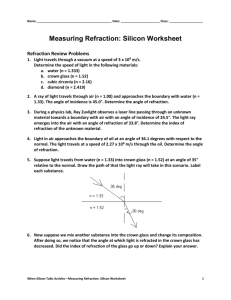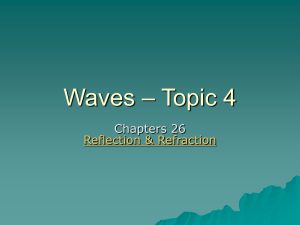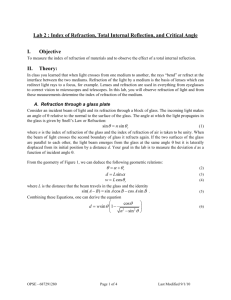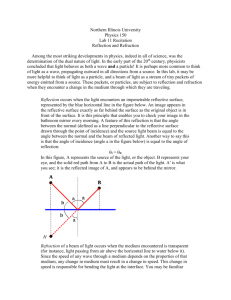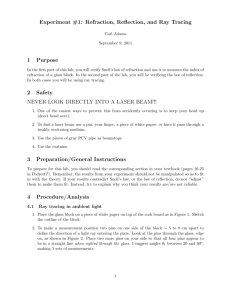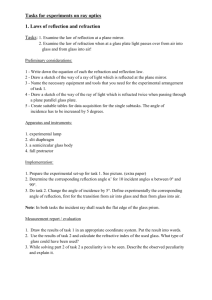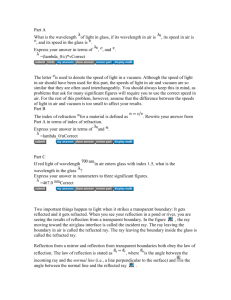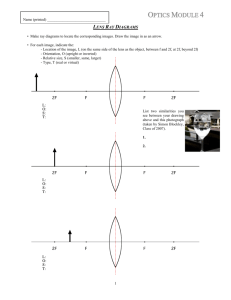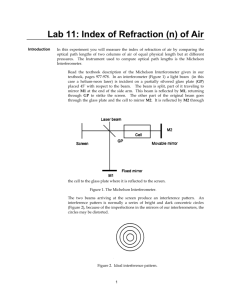chapter23.3 - Colorado Mesa University
advertisement
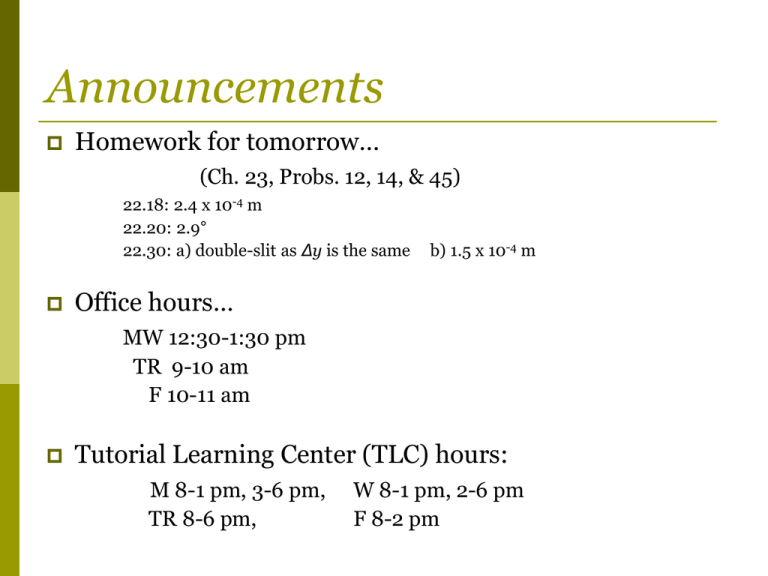
Announcements Homework for tomorrow… (Ch. 23, Probs. 12, 14, & 45) 22.18: 2.4 x 10-4 m 22.20: 2.9° 22.30: a) double-slit as Δy is the same b) 1.5 x 10-4 m Office hours… MW 12:30-1:30 pm TR 9-10 am F 10-11 am Tutorial Learning Center (TLC) hours: M 8-1 pm, 3-6 pm, TR 8-6 pm, W 8-1 pm, 2-6 pm F 8-2 pm Chapter 23 Ray Optics (Refraction) Last time… The Law of Reflection is… Snell’s Law is… i.e. 23.3: Deflecting a laser beam A laser beam is aimed at a 1.0 cm thick sheet of glass at an angle 30° above the glass. a. b. c. What is the laser beam’s direction of travel in the glass? What is its direction in the air on the other side? By what distance is the laser beam displaced? i.e. 23.4: Measuring the index of refraction The figure below shows a laser beam deflected by a 30°-60°-90° prism. What is the prism’s index of refraction? Total Internal Reflection… When a ray is transmitted into a material with a lower index of refraction, it bends away from the normal. There exists a critical angle, θc, where one gets zero refraction! What is θc? Total Internal Reflection… When a ray is transmitted into a material with a lower index of refraction, it bends away from the normal. There exists a critical angle, θc, where one gets zero refraction! What is θc? Notice: As θ1 increases… θ2 approaches 90. fraction of transmitted light energy decreases. fraction of reflected light energy increases. Quiz Question 1 A laser beam undergoes two refractions plus total internal reflection at the interface between medium 2 and medium 3. Which is true? 1. 2. 3. n1 < n3. n1 > n3. There’s not enough information to compare n1 and n3. i.e. 23.5: Total internal reflection A light bulb is set in the bottom of a 3.0 m deep swimming pool. What is the diameter of the circle of light seen on the water’s surface from above? Fiber Optics… The most important modern application of total internal reflection (T.I.R.) is optical fibers. Light rays enter the glass fiber, then impinge on the inside wall of the glass at an angle above the critical angle, so they undergo T.I.R. and remain inside the glass. The light continues to “bounce” its way down the tube as if it were inside a pipe. Fiber Optics… In a practical optical fiber, a small-diameter glass core is surrounded by a layer of glass cladding. The glass used for the core and the cladding have: ncore ncladding
